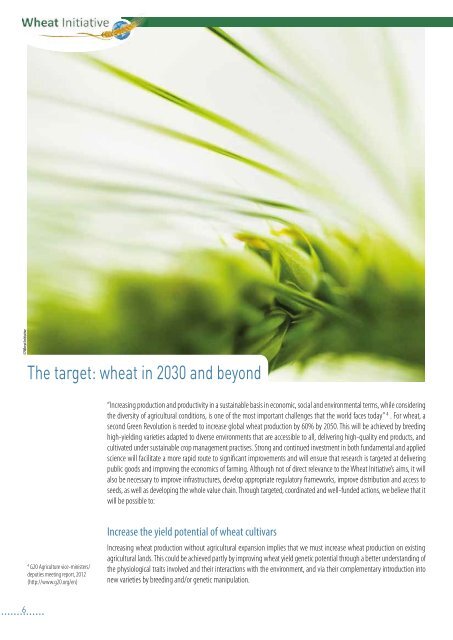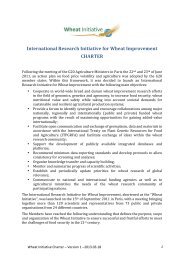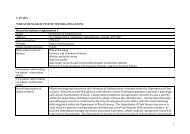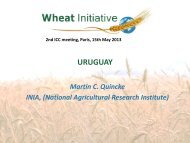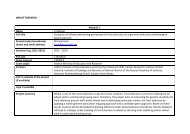An international vision for wheat improvement - Wheat Initiative
An international vision for wheat improvement - Wheat Initiative
An international vision for wheat improvement - Wheat Initiative
Create successful ePaper yourself
Turn your PDF publications into a flip-book with our unique Google optimized e-Paper software.
©<strong>Wheat</strong> <strong>Initiative</strong><br />
The target: <strong>wheat</strong> in 2030 and beyond<br />
“Increasing production and productivity in a sustainable basis in economic, social and environmental terms, while considering<br />
the diversity of agricultural conditions, is one of the most important challenges that the world faces today” 4 . For <strong>wheat</strong>, a<br />
second Green Revolution is needed to increase global <strong>wheat</strong> production by 60% by 2050. This will be achieved by breeding<br />
high-yielding varieties adapted to diverse environments that are accessible to all, delivering high-quality end products, and<br />
cultivated under sustainable crop management practises. Strong and continued investment in both fundamental and applied<br />
science will facilitate a more rapid route to significant <strong>improvement</strong>s and will ensure that research is targeted at delivering<br />
public goods and improving the economics of farming. Although not of direct relevance to the <strong>Wheat</strong> <strong>Initiative</strong>’s aims, it will<br />
also be necessary to improve infrastructures, develop appropriate regulatory frameworks, improve distribution and access to<br />
seeds, as well as developing the whole value chain. Through targeted, coordinated and well-funded actions, we believe that it<br />
will be possible to:<br />
4<br />
G20 Agriculture vice-ministers/<br />
deputies meeting report, 2012<br />
(http://www.g20.org/en)<br />
Increase the yield potential of <strong>wheat</strong> cultivars<br />
Increasing <strong>wheat</strong> production without agricultural expansion implies that we must increase <strong>wheat</strong> production on existing<br />
agricultural lands. This could be achieved partly by improving <strong>wheat</strong> yield genetic potential through a better understanding of<br />
the physiological traits involved and their interactions with the environment, and via their complementary introduction into<br />
new varieties by breeding and/or genetic manipulation.<br />
6


